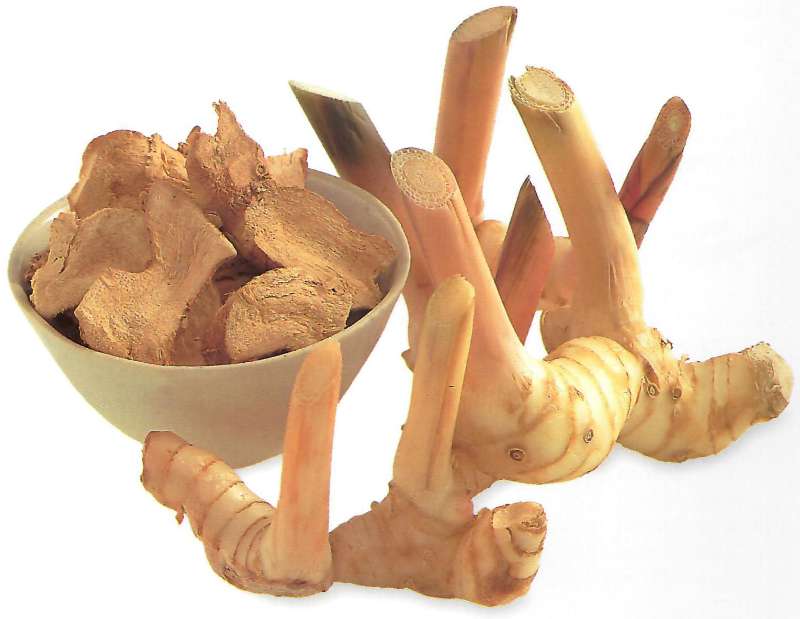Galangal
Chinese: Liang Jiang; Thai: Khaa; Vietnamese: Cu Gieng.
Like root ginger, galangal is a rhizome that grows underneath the ground. The finger-like protruberances of galangal tend to be thinner and paler in colour, but the two look similar and are used in much the same way.
Fresh galangal used to be virtually unobtainable in the West (although it was widely used in medieval Europe), but is now almost as easy to come by as ginger. There are two types. Greater galangal, also known as lengkuas, is a native of Indonesia, while lesser galangal originated in southern China. It is not as widely used as its larger relation, but is popular in Thailand, where it is known as krachai.
Laos powder is dried galangal that has been ground. Although it does not taste the same as fresh galangal, South¬east Asian cooks appreciate its convenience and you will find it in many South-east Asian recipes. As a guide, 5m1/1 tsp of laos powder is equivalent to lcm/1/2in fresh galangal, which has been peeled and chopped.

Aroma and flavour
Greater galangal has a pine-like aroma with a correspondingly sharp flavour; lesser galangal is more pungent and the flavour has been likened to a cross between ginger and black pepper. The rhizome is usually used fresh, but is also dried and powdered.
Culinary uses
Galangal is an essential flavouring agent in South-east Asian cooking, particularly in seafood and meat dishes. It is often pounded with shallots, garlic and chillies to make a spice paste for dips or curries. In Thailand, slices of galangal are added to soups, with shreds of lemon grass and lime leaves, while Vietnamese cooks add it to a peanut and lime sauce used to dress meat and vegetable salads.
Preparation and cooking techniques
Fresh galangal should always be peeled. It is usually thinly sliced or cut into matchsticks for cooking. Because it is harder than ginger, you will need to slice it before attempting to crush it, and slices or shreds need to be cooked for somewhat longer than ginger if they are to be tender.
Storage
Fresh galangal will keep for up to 2 weeks if stored in a cool, dry place. It can be stored in the fridge, but it must be well wrapped in greaseproof paper to keep it moist.